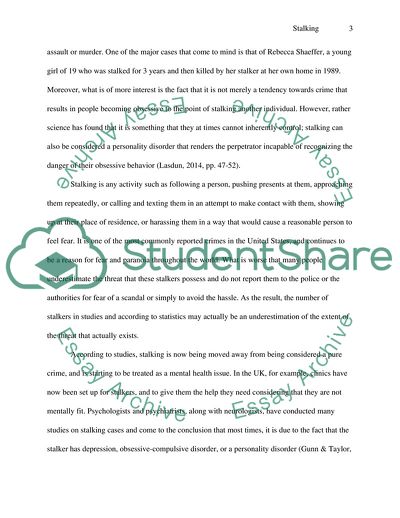Cite this document
(Forensic Psychiatry: Stalking Coursework Example | Topics and Well Written Essays - 2500 words, n.d.)
Forensic Psychiatry: Stalking Coursework Example | Topics and Well Written Essays - 2500 words. https://studentshare.org/psychology/1822106-stalking
Forensic Psychiatry: Stalking Coursework Example | Topics and Well Written Essays - 2500 words. https://studentshare.org/psychology/1822106-stalking
(Forensic Psychiatry: Stalking Coursework Example | Topics and Well Written Essays - 2500 Words)
Forensic Psychiatry: Stalking Coursework Example | Topics and Well Written Essays - 2500 Words. https://studentshare.org/psychology/1822106-stalking.
Forensic Psychiatry: Stalking Coursework Example | Topics and Well Written Essays - 2500 Words. https://studentshare.org/psychology/1822106-stalking.
“Forensic Psychiatry: Stalking Coursework Example | Topics and Well Written Essays - 2500 Words”. https://studentshare.org/psychology/1822106-stalking.


